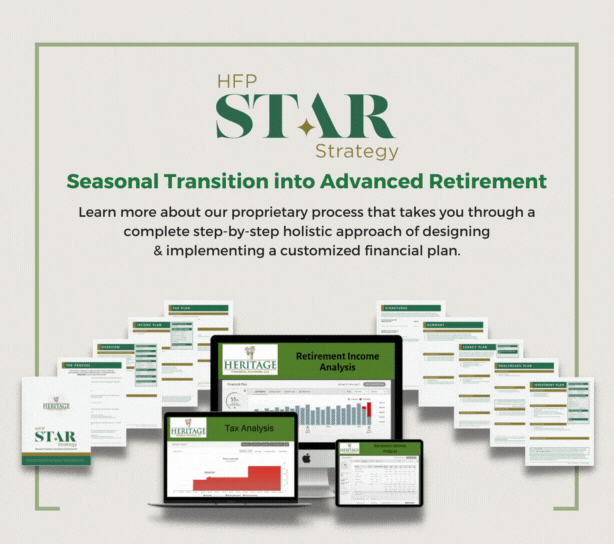Understanding the VIX – and Why Your Own Volatility Tolerance Matters More
In early April 2025, the financial world turned its focus toward an old but telling number: the VIX, commonly known as the “fear gauge” of the stock market. Triggered by rising concerns over renewed tariff tensions between the United States and several major trading partners, the VIX spiked to its highest level in five years. For some investors, the surge raised red flags. For others, it served as a reminder that while markets may always be unpredictable, thoughtful planning makes all the difference.
At Heritage Financial Planning, we believe it’s important to understand what the VIX is, what it reflects – and more importantly, why knowing your own volatility tolerance is a far more powerful tool than any market index.
What Is the VIX?
The VIX, or Volatility Index, was introduced by the Chicago Board Options Exchange (CBOE) in 1993. It measures the market’s expectation of volatility over the next 30 days, based on S&P 500 options pricing. In general:
-
A low VIX (typically under 15) signals investor calm and a stable market environment.
-
A high VIX (above 30) suggests traders are expecting large price swings, often due to uncertainty or fear.
We saw extreme highs during the 2008 financial crisis and again in the early days of the COVID-19 pandemic. Now, in 2025, renewed tariff talk—especially targeting tech and consumer goods—has reignited fears around trade disruptions and economic slowdown. As a result, the VIX has climbed past 35 for the first time since 2020.
How to Interpret the VIX
It’s important to remember that the VIX doesn’t forecast which direction the market will go – only how volatile investors expect it to be. Think of it like a storm warning: it doesn’t guarantee rain, but it may be wise to carry an umbrella.
-
Short-term traders often use the VIX to hedge positions or time their moves.
-
Long-term investors, however, should treat it as a reflection of market mood – not a signal to panic.
Why Your Volatility Tolerance Matters More
The VIX is just a number – but you are not. Knowing how much volatility you can handle is far more meaningful than any reading on a screen.
Each person’s reaction to market turbulence is shaped by their:
-
Time horizon (When do you need your money?)
-
Financial goals (Retirement? College savings? A new home?)
-
Income stability
-
Emotional response to uncertainty
Some investors may stress over a 5% market dip. Others see opportunity. This isn’t about knowledge – it’s about personal tolerance for risk.
At Heritage Financial Planning, we help our clients better understand their individual risk profile so they can stay grounded and focused, especially when market emotions run high. Because a disciplined mindset – not market timing – drives long-term success.
How a Financial Advisor Can Help
In volatile markets, staying confident and calm can be difficult. That’s where a trusted advisor comes in.
We help clients:
-
Clarify their short- and long-term financial goals
-
Understand their emotional and financial comfort zones
-
Create portfolios that reflect their personal tolerance for risk
-
Stick with a plan, even when headlines scream otherwise
Markets will always be unpredictable. That’s a given. What matters is whether your strategy is built to weather the storm – and whether you feel confident sticking with it.
Staying Calm with the HFP S.T.A.R. Strategy
At Heritage Financial Planning, our HFP S.T.A.R. Strategy (Seasonal Transition into Advanced Retirement) is designed to guide you through market volatility with confidence and clarity. We use a time-tested, season-based approach to help pre-retirees and retirees plan and adjust their investment strategy as they transition into and through retirement. By aligning your plan with your personal goals, lifestyle needs, and market conditions, we help ensure you stay on track – no matter what the VIX is doing.
Ready to take control of your future? Contact our office today to schedule a conversation and learn how the S.T.A.R. Strategy can support your long-term retirement success.

Click here to learn more about our HFP STAR Strategy process.
Source: Copyright © 2025 FMeX. All rights reserved. Distributed by Financial Media Exchange.












